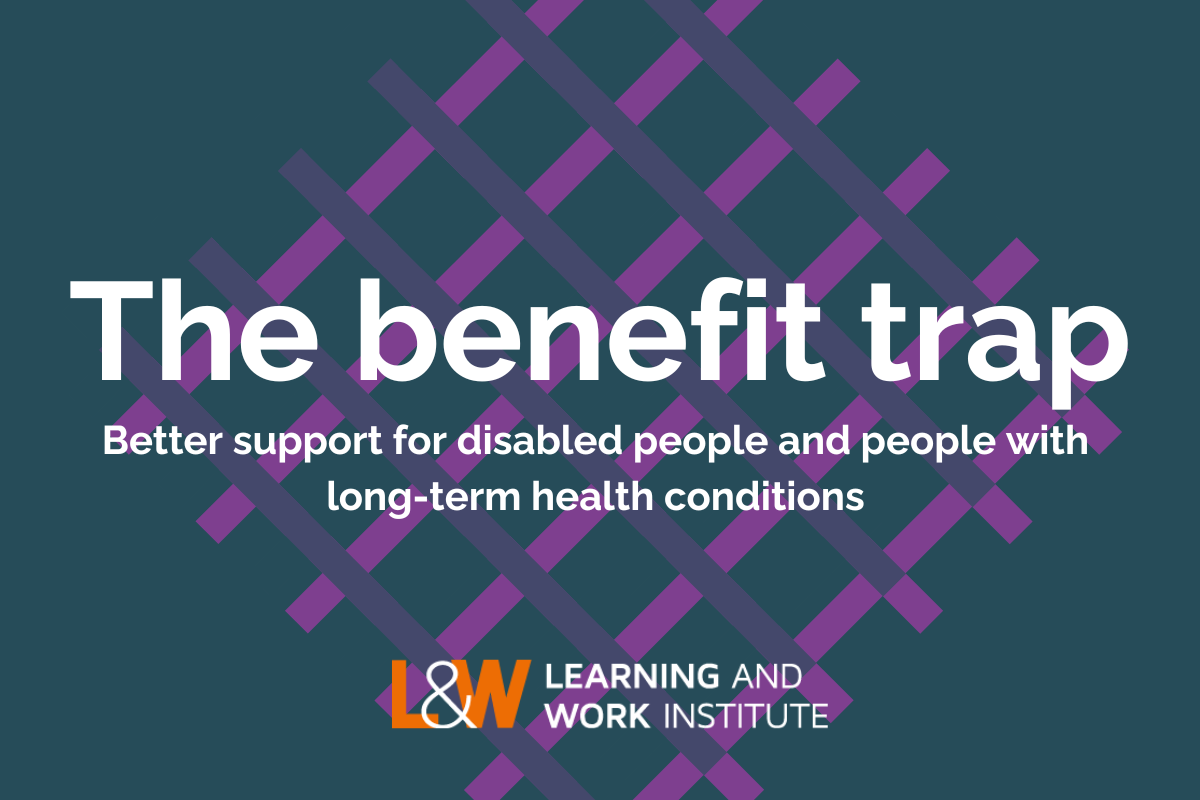Reforming the ‘benefit trap’ to offer more support to disabled people could help half a million more people into work by 2035

The benefit system is trapping 3.5 million people on sickness benefits – many of whom want to work – in a dead end of too little support, a new report has found. Doubling the help available could help an extra 500,000 people into work over 10 years.
Research from Learning and Work Institute (L&W) shows that out-of-work people and those with long-term health conditions are more likely to claim incapacity benefits as the so-called ‘safety net’ of unemployment benefit has sunk below the cost of living. Incapacity benefits provide an extra £5,000 a year, but they don’t offer people support to re-enter the labour market even when they might want to work.
Benefit Trap
The report argues that this ‘benefit trap’ effect is magnified where people don’t feel there are good jobs available that suit their skills and ambitions. Employers are not always aware of the practical steps they can take in job design, recruitment and retention to support disabled people and people with long-term health conditions, and there is a backlog of applications for Access to Work funding to support workplace adjustments.
As a result, the number of incapacity benefits has soared by 37% since the pandemic. Only 1% of people economically inactive due to long-term sickness are in work six months later, compared to 33% of unemployed people. Yet one in three incapacity benefit claimants says they might be able to work now or in the future. Failing to tackle this means people won’t fulfil their potential, employers will struggle to fill their vacancies, and the cost of disability-related benefits is projected to climb to £100bn by 2029-30.
Health and Disability Benefits Green Paper
L&W estimates that successful reform to the system could help 500,000 more people into work over ten years, delivering one quarter of the increase needed to achieve the Government’s 80% employment rate ambition. This would boost the economy by £8 billion a year and save the taxpayer £4 billion a year.
Benefit Passport
The Government’s upcoming health and disability benefits Green Paper will set out its plans. L&W is calling on the Government to invest an extra £450 million per year to invite all incapacity benefit claimants to regular Work Support Conversations, expand and improve employment support, and work with employers to offer better opportunities and support job retention. A new Benefit Passport would meanwhile de-risk the process of finding work by guaranteeing people can automatically return to their previous benefit status if they leave work within six months.
Stephen Evans, Chief Executive at Learning and Work Institute, said:
“One in five people economically inactive due to long-term sickness say they want a job, and one in three health and disability claimants say they might be able to work now or in the future. But Britain has created a ‘benefit trap’ through a safety net set too low, insufficient and inadequate support to prepare for or look for work, and the need for more jobs and workplaces that can flex to meet the needs of people with health problems and disabilities. Reform can be a win-win-win for people, employers and the economy.”











Responses